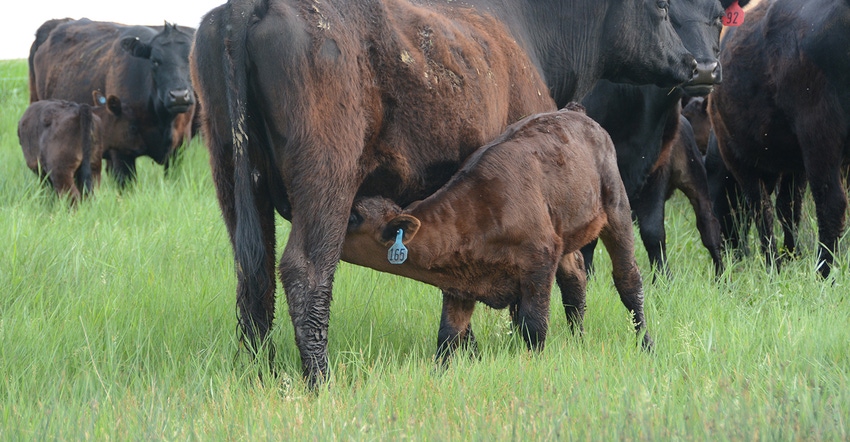January 23, 2018

A cow’s body condition score when she calves is critical, says Ken Olson, South Dakota State University Extension beef specialist. Anything less than a BCS of 5 for a cow is not good.
“Managing cow nutritional status from now until adequate green grass will become very important to ensure cows will be cycling and fertile when the breeding season starts,” Olson says. “There is strong evidence that cows with a moderate BCS of 5 (on a scale of 1 to 9) will be more likely to restart estrous cycles before breeding and more likely to get pregnant than cows in thinner BCS (less than 5).”
As calving season progresses, keep track of the running average of the BCS of the cows, Olson suggests.
“If the running average is 5 or better, the cows are in great shape and it will be a simple matter of feeding them adequately to maintain BCS,” he says. “If the running average is less than 5, then the feeding program should be modified to give them the opportunity to gain BCS before breeding begins,”
If the running average is decreasing as time goes on, the cows are in a negative energy balance and pulling fat off their bodies.
First calf heifers lose
First-calf heifers are most likely to lose BCS after calving. They are young and still growing while lactating for the first time. This creates greater nutritional challenges for them than mature cows, and makes them more likely to have inadequate nutritional intake to be reproductively sound when breeding begins.
“It is even more important to keep BCS records on first calf heifers over time than cows, and make appropriate feed adjustments,” Olson says. “Abundant research suggests that first-calf heifers should be at a BCS of 6 and that they should gain BCS after calving, even if they were at 6 at calving.
“Keeping heifers separate from the mature cows is an important. They cannot compete at the feed bunk with larger, older cows, and will get cheated out of their share of feed and supplements. Additionally, keeping them separate will allow the opportunity to adjust their diet if needed, and not have to provide additional, unneeded feed to the mature cows.”
Feeding Considerations
There are many feedstuffs that can be used to improve nutrient intake if needed, Olson says. Distiller’s grains, wheat midds, high-quality hay and a large variety of other byproducts and commodities are all possibilities.
Nutritionists can help determine which feedstuff provides the needed nutrients at the best price.
Source: SDSU
You May Also Like




